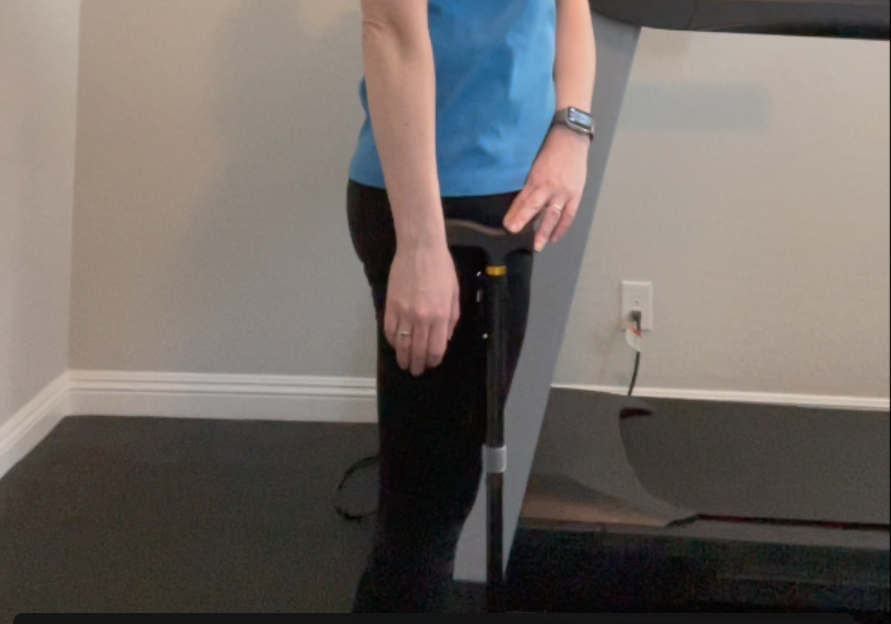
Walking canes are a simple yet effective tool that can greatly improve mobility for people of all ages. Whether you’re recovering from an injury or surgery, dealing with arthritis or other age-related mobility issues, or simply looking for extra stability and support while walking, a walking cane can be a lifesaver. However, it’s important to use your cane properly to avoid discomfort, strain, and even injury. In this blog post, we’ll provide an ultimate checklist for proper walking cane use that will help you get the most out of your cane while staying safe and comfortable.
Choose the Right Cane

The first step in proper walking cane use is selecting the right cane for your needs. There are many different types of canes available, from standard wooden canes to adjustable folding canes, quad canes, and even offset canes designed to reduce pressure on the wrist. When choosing a cane, consider your height, weight, and mobility needs. A good rule of thumb is to make sure that the top of the cane is level with your wrist when you stand up straight with your arms at your sides.
Adjust the Height

Once you’ve selected the right cane, you need to adjust the height to fit your body properly. Stand up straight with your shoes on and hold the cane at your side. The top of the cane should be level with the crease in your wrist. If the cane is too short or too tall, it can cause discomfort and strain. Most canes come with adjustable height settings that allow you to customize the fit to your needs.
Hold the Cane Properly

To use your cane properly, you need to hold it in the correct position. Hold the cane in the hand opposite the side of your body that needs support. For example, if you have a weak right leg, hold the cane in your left hand. Place your hand on the grip of the cane and wrap your fingers around it, keeping your grip relaxed. Your elbow should be slightly bent, allowing for shock absorption when you take a step.
Place the Cane Correctly

When you take a step, you should place your cane on the ground about one stride’s length ahead of your foot. The cane should be at an angle, with the tip pointing slightly outward. This will provide maximum support and stability as you move forward. Avoid placing the cane too far ahead of your body, as this can cause you to lean forward and lose your balance.
Take Small Steps

Walking with a cane requires a slightly different gait than walking without one. Take small, measured steps, keeping your feet close together. This will help you maintain your balance and reduce the risk of tripping or stumbling. If you’re unsure of how to walk with a cane, consider working with a physical therapist or occupational therapist to learn the proper techniques.
Walk Upright

As you use your cane, it’s important to maintain good posture. Walk with your head up, looking forward, and your shoulders back. Avoid hunching over your cane, as this can cause strain on your neck and back muscles. Walking upright will not only help you maintain your balance but also boost your confidence and self-esteem.
Use the Cane on Stairs

Using a cane on stairs can be a bit tricky, but with the right technique, it can provide valuable support and stability. When going up the stairs, hold your cane in your hand on the same side as the banister. Use your cane to provide extra support as you climb each step, making sure to place it on the step before your foot. When going down the stairs, hold your cane in your opposite hand and use it to provide support as you descend.
Avoid Uneven Surfaces

Walking with a cane on uneven surfaces, such as gravel, cobblestones, or grass, can be challenging. Avoid these surfaces as much as possible, and if you must walk on them, take small, measured steps, and be extra cautious. Look ahead for potential hazards, and use your cane for support and stability.
In conclusion, using a walking cane can greatly improve your mobility and quality of life, but it’s essential to use it properly. Follow this ultimate checklist for proper walking cane use, and you’ll be on your way to staying safe, comfortable, and confident while walking. Remember to choose the right cane, adjust the height, hold it properly, place it correctly, take small steps, walk upright, use it on stairs, avoid uneven surfaces, maintain it, and know when to seek help. With these tips in mind, you can enjoy all the benefits of a walking cane and move about with ease and grace.
A Pillar of Strength in Golden Years: 10 Paths on How Regular Screenings Uphold Your Health
In the evocative voyage of life, the golden years emerge as a time to relish the fruits of decades of labor, to bask in the
Unlock the Secret to Sweet Dreams: 10 Ways of Enhancing Sleep Quality as You Age
Share on facebook Facebook Share on twitter Twitter Share on linkedin LinkedIn Share on pinterest Pinterest Share on telegram Telegram Share on whatsapp WhatsApp Share
Building Bridges, Not Walls: 10 Methods of Mastering the Art of Cultivating Social Connections in the Golden Years
Share on facebook Facebook Share on twitter Twitter Share on linkedin LinkedIn Share on telegram Telegram Share on whatsapp WhatsApp Share on email Email Share
Navigating the Golden Years: 10 Ways to Achieve Emotional Wellness and Conquering Loneliness
Share on facebook Facebook Share on twitter Twitter Share on linkedin LinkedIn Share on pinterest Pinterest Share on telegram Telegram Share on whatsapp WhatsApp Share
Stay Brainy in Your Golden Years: 10 Fun Activities to Keep Your Mind Sharp and Engaged!
Hello, brain buffs! Aging might be inevitable, but letting our minds turn to mush? No way, José! Time to boot up those brain cells and
10 Effective Exercise Routines for Older Adults: Low-Impact Fitness Options
Of course, maintaining physical health is crucial at any age, but especially so as we grow older. Here are ten gentle, effective, and friendly exercise